In recent years, as the outdoor camping craze continues to heat up, the outdoor power supply industry has also taken advantage of the trend. Moreover, just last December, DJI suddenly released its first outdoor power supply product, the DJI Power series, and announced its official entry into the new field of outdoor power supply.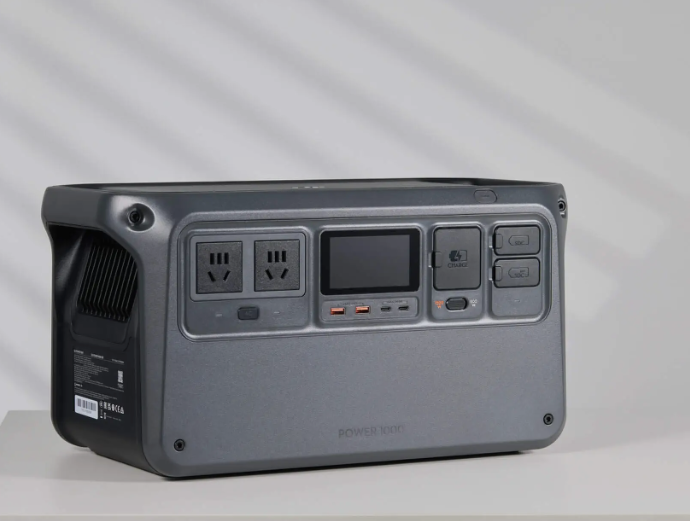
Actually, in the past few years, many have expected DJI to launch its outdoor power supply products. Notably, DJI’s products are closely related to scenarios that require outdoor power sources such as camping and rural vacations, like DJI drones. Essentially, DJI’s user group has a stronger need for outdoor energy replenishment.
Furthermore, the outdoor power supply industry does need brands like DJI to come in and roll it out, even though this industry is already well-established. With DJI’s entry, a top player in both brand strength and influence, the entire outdoor mobile power industry will usher in more healthy competition. Consequently, consumers will have better product choices.
Additionally, DJI Power 1000. Here, the “1000” is very intuitive, representing one kilowatt-hour of electricity. Specifically, the battery capacity is 1024 watt-hours. Next, I will bring you the hands-on experience of this product.
Design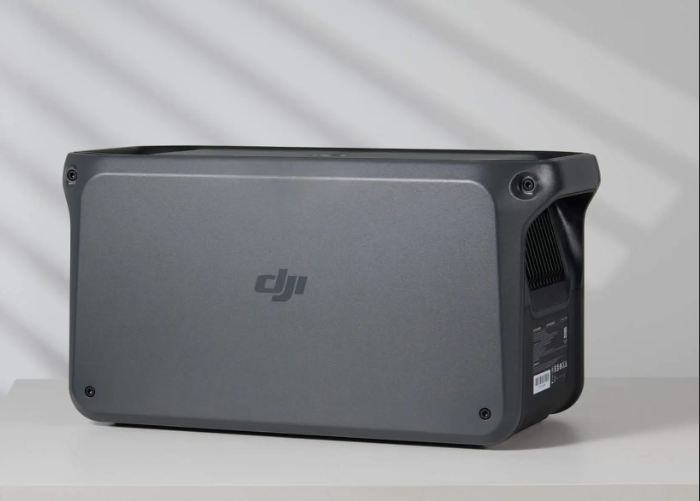
DJI Power 1000 takes on the form of a traditional outdoor power supply, but it incorporates distinct DJI elements, like the fine texture on its engineering plastic shell, consistent with DJI’s design ethos seen in drones and gimbals. Moreover, it features a sleek jet-black color scheme, opting for simplicity and reliability over flashy color combinations.
Its design specifics, both the top and back of the unit sport a minimalist, flat design, showcasing only a glossy black DJI logo. Furthermore, the handles on either side of DJI Power 1000 are accompanied by vertical heat dissipation openings below them.
Beneath the heat dissipation area on the right side, there are two 1/4″ threaded ports, enabling connection to a solar panel through DJI Power’s solar panel adapter module (MPPT) or a car charger plug to SDC charging cable for eco-friendly charging. Moving to the front, all input and output interfaces, along with an LCD panel displaying product status, are located.
In terms of interface layout (from left to right), it includes:
2 AC (alternating current) power supply ports
2 24W USB-A ports
2 140W USB-C ports
1 AC (alternating current) charging port
1 SDC port
1 SDC Lite port
Additionally, beneath the left AC power supply port, there’s a separate AC button for enabling external power supply through this port.
The AC charging port and the two SDC ports are equipped with waterproof sealing covers, with 1200W and 600W switches situated under the AC charging port for selecting different power recharges. The distinguishing feature lies in the two SDC interfaces, which, through DJI’s unique adapter accessories, can achieve up to 240 watts of output and 400 watts of charging. It provides comprehensive information regarding power status, battery level, charging time/available time, and even external power supply methods during SDC charging.
Concerning reliability, DJI Power 1000 is constructed from flame-retardant materials, capable of withstanding loads up to 200 kilograms and operating in high-temperature environments of up to 40°C. Internally, it incorporates 11 temperature sensors for constant heat dissipation monitoring and 10 fuses for circuit protection. The battery core, made of lithium iron phosphate, boasts a lifespan of 3,000 cycles and is equipped with the BMS intelligent battery management system for additional safety.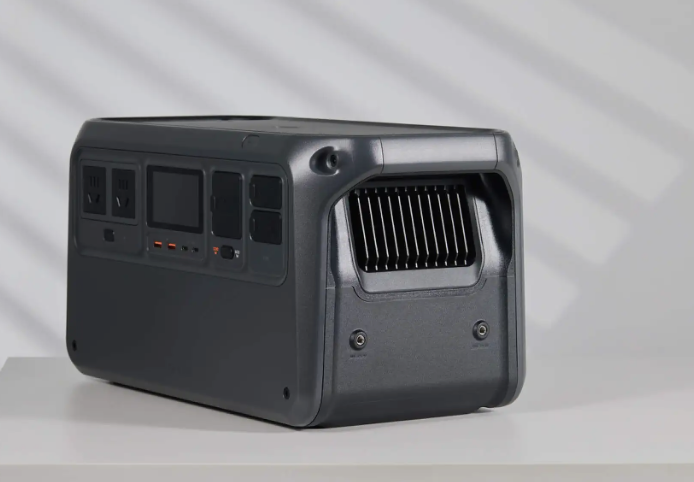
Moving on to its size specifications, the DJI Power 1000 measures 448 mm long, 225 mm wide, and 230 mm high, weighing 13 kg, suitable for most adult users. For enhanced portability, users can opt for the DJI Power 500, offering 512-watt hours of capacity and weighing only 7.3 kg.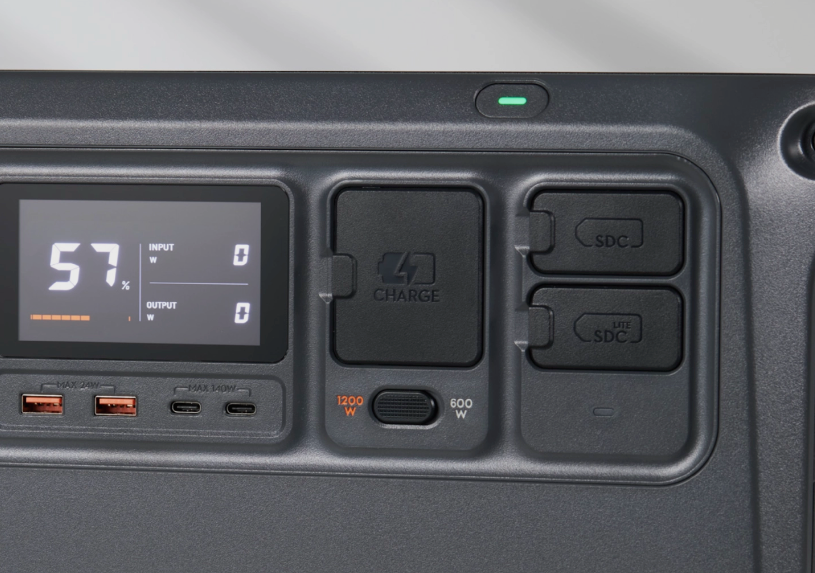
Returning to DJI Power 1000, DJI has designed a storage and protective bag for easier transportation. This bag features heat dissipation openings on its handles, a flip-up front panel for connectivity, and protection against rain and scratches. However, it comes to 699 yuan, which may deter some consumers.
Experience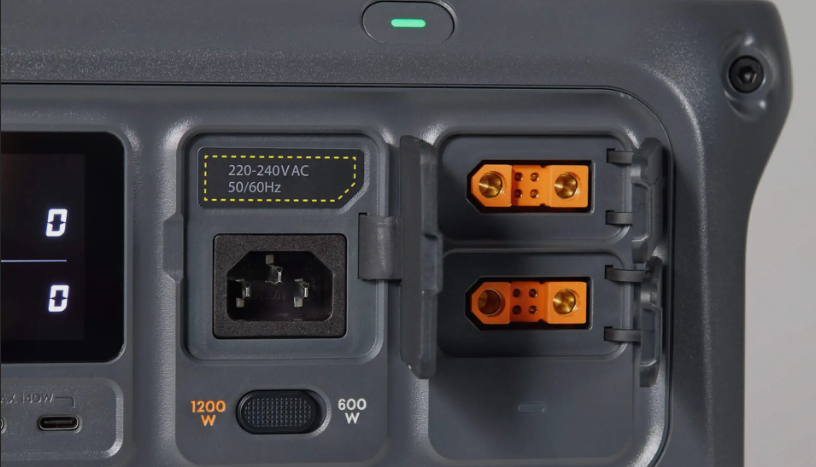
The DJI Power 1000 battery holds a capacity of 1024 watt-hours. It can charge mobile phones approximately 57 times, digital cameras about 59 times, and drones about 12 times. Additionally, on the left side of the fuselage, there is an AC (alternating current) power supply port supporting 220V~240V AC output. The maximum continuous output can reach 2200 watts, making it compatible with common household appliances.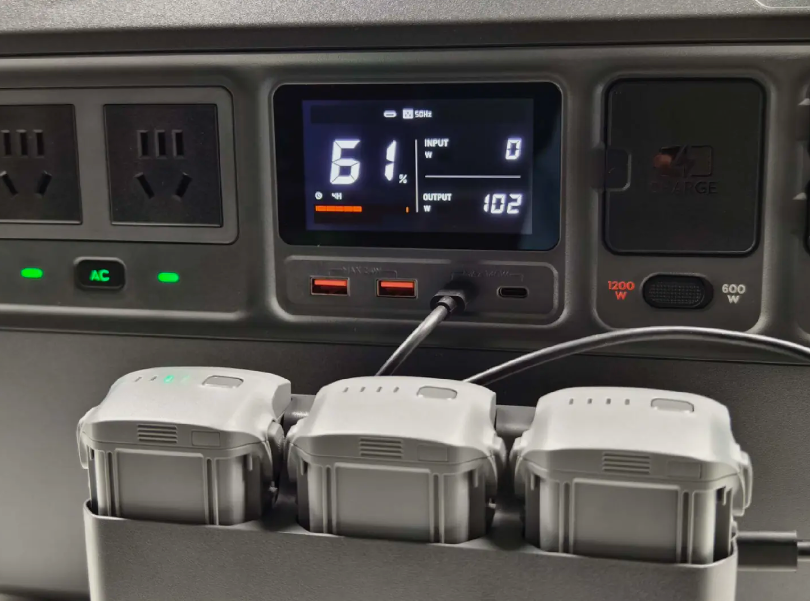
Moreover, the DJI Power 1000 activates UPS mode by default. This feature allows it to swiftly switch to a power supply state if the mains power suddenly cuts off, ensuring the smooth operation of electrical equipment. As a result, it serves as an ideal emergency power supply for homes.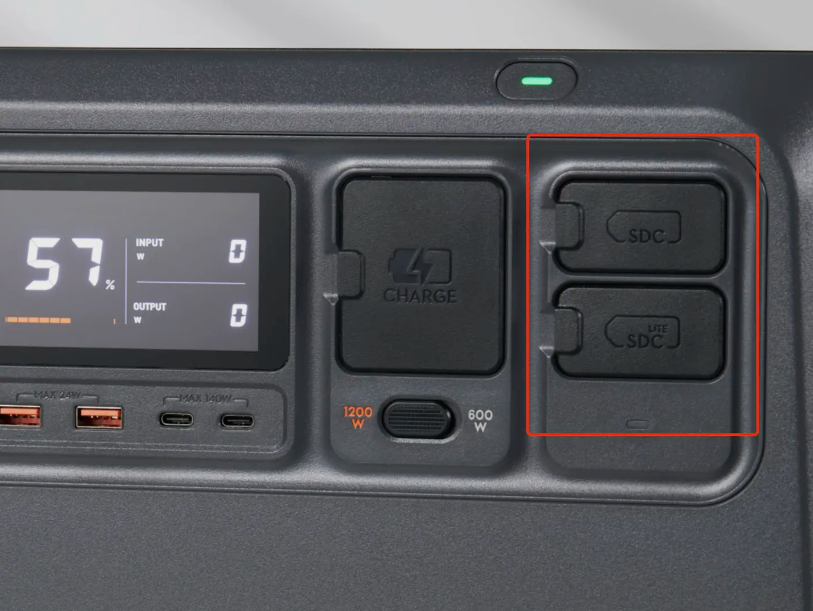
In a recent evaluation by the IT House Evaluation Room, the DJI Power 1000 Outdoor Power Supply was examined. It was found to be a perfect companion for DJI drones and a valuable asset for outdoor camping activities. During outdoor usage, the DJI Power 1000 primarily handles high-power appliances such as hair dryers, kettles, and microwave ovens.
AC Power
The high-power electrical appliance test begins at the AC power supply port. When an 1800W hair dryer is set to its maximum gear, DJI Power 1000 easily outputs about 1700W, operating at 65% power. Consequently, the display indicates approximately 20 minutes of usage time, subject to fluctuations during operation.
Transitioning to a microwave oven with a rated power of 1180W, when set to its highest high-fire mode, DJI Power 1000 delivers about 1050W, operating at 57% power. According to the display, it can sustain operation for roughly 24 minutes.
When a 90W charger is plugged into the AC power supply port to charge the Xiaomi Mi 14 Ultra, the charging power reaches approximately 69W, promising 7 hours of usage. Simultaneously, with two AC power ports in operation, a stable and reliable power supply is effortlessly provided to two computers.
Moving on to the actual measurements of the power supply through USB interfaces, let’s examine the performance of the four USB ports of DJI Power 1000. 
Charging a MacBook Pro through the USB-C port of DJI Power 1000 proves stress-free, with support for up to PD 3.1.
During MacBook charging, the power output is limited to 6W, facilitating trickle charging once the device is fully charged. Charging a 2022 iPad Pro easily reaches 29W, with support for 35W PD fast charging. With two 24-watt USB-A and two 140-watt USB-C ports, DJI Power 1000 adequately handles multiple mobile devices simultaneously.
Additionally, DJI Power 1000’s USB-C interface is an ideal match for DJI drones. Charging the DJI Air 3 drone’s battery box through this interface can deliver over 100W of power, enabling quick recharging of the smart battery during drone usage.
Actual Measurement of SDC
We’re discussing DJI drones, so let’s highlight the two unique SDC interfaces of the DJI Power 1000. These interfaces set the DJI Power 1000 apart from other outdoor power products. They’re essential for its ecological advantage.
Both of these SDC super fast charges can discharge and charge externally. First, let’s delve into the fast charging capabilities of certain DJI drone batteries.
Officially, this interface rapidly powers DJI Mavic 3 series smart flight batteries, Air 3 smart flight batteries, Inspire 3 TB51 smart flight batteries and M30 TB30 smart flight batteries. Charging a Mavic 3 series battery from 10% to 95% takes just 32 minutes.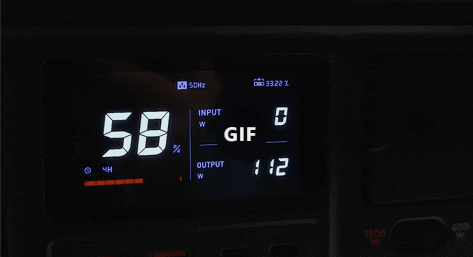
Two SDC super-fast chargers are linked to the car charger plug via the SDC charging cable (priced at 299 yuan), and the SDC to DJI Air 3 fast charging cable (priced at 99 yuan). The SDC to DJI Air 3 fast charging cable boasts 125 watts of fast charging power. Our measurements confirm it, with the Air 3 battery reaching over 100W. Charging from 0% to full capacity takes around 44 minutes.
In emergencies, if your drone needs a quick power boost, you can charge the manager via USB-C. Then, connect an external SDC to the DJI Air 3 fast charging cable to charge the battery separately. This setup can deliver over 200W of power, ensuring swift replenishment and a speedy return to flight.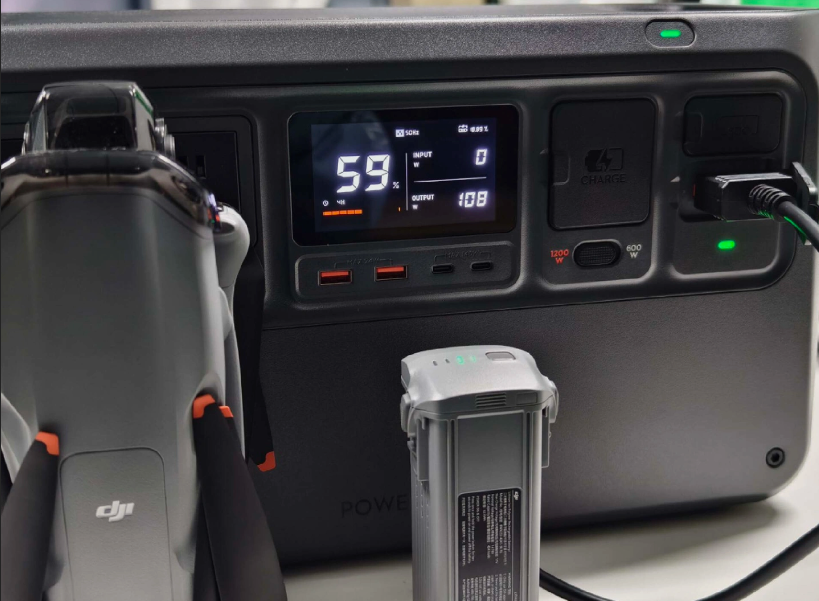
When using high-power appliances like hair dryers or microwaves, the DJI Power 1000 emits noticeable fan cooling sounds, measuring about 56dB near the heat dissipation holes. This noise is audible within a 3-meter range in quiet spaces like bedrooms or libraries, akin to an old air conditioner’s hum.
DJI Power 1000 is primarily designed for outdoor use. In outdoor settings, its operational noise is practically imperceptible. Plus, when high-power appliances like hair dryers or water heaters are in use, their noise masks that of the DJI Power 1000. Hence, the operational noise of DJI Power 1000 is effectively nil.
Even when charging devices like phones, computers, or tablets, the operational noise of DJI Power 1000 remains minimal. In quiet environments, even near the heat dissipation outlet, the noise barely exceeds 35 dB. In office settings, it’s nearly inaudible, even when placed nearby.
Therefore, concerns about DJI Power 1000’s operational noise, especially in outdoor settings, are unwarranted.
Charging Test
Let’s discuss DJI Power 1000’s charging capabilities after covering its external power supply. DJI Power 1000 offers three charging methods: mains, solar, and car chargers.
In fast charging mode, it takes just 50 minutes to reach 80% battery and 70 minutes for a full charge. Maintaining stability around 1170W, nearing the peak of 1200W, it indicates approximately 26 minutes until full charge.
If your power source isn’t stable or other high-power devices are in use, switch to 600W mode for consistent operation. At 57% battery, it shows about 50 minutes remaining for charging. For such a sizable device, the charging time is comparable to that of a mobile phone, which is quite satisfactory.
DJI Power 1000 supports solar charging through the DJI Power Solar Panel Adapter Module (MPPT). The 360-watt solar charging kit costs 4,896 yuan and includes three 120-watt Luyao solar panels, charging the DJI Power 1000 in 3 to 6 hours under optimal weather and light conditions. This feature is essential for users traveling long distances or venturing into remote areas.
The third option is the popular car charger, utilizing the DJI Power car charger plug and SDC charging cable to connect via the car cigarette lighter interface. It’s important to note that when charging, ensure the car engine is running. Although it’s a car charger, it’s not exceptionally fast. However, after a relatively short journey, it can reach a satisfactory charge level.
Verdict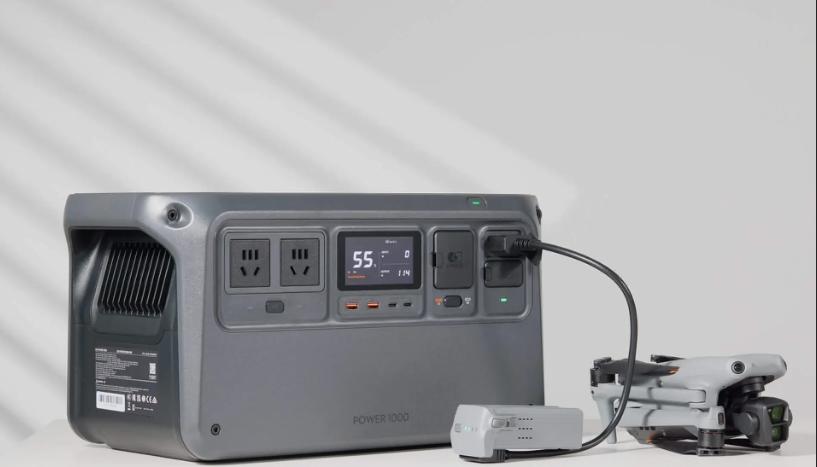
To assess the benefits of the DJI Power 1000 outdoor power supply, let’s consider three angles.
Firstly, for DJI users, especially the large community in the drone market, the introduction of DJI Power 1000 has effectively addressed their persistent need for outdoor power. DJI Power 1000 swiftly recharges several DJI drone batteries with over 100W power, enhancing the ecosystem of DJI products. Users express relief, “I finally waited for you, thankfully didn’t lose hope.”
Moreover, ordinary consumers, who predominantly favor DJI in sectors like drones and action cameras, gravitate towards leading brands for outdoor power solutions. This puts pressure on industry players like DJI entering the outdoor power sector. However, DJI’s extensive experience in battery technology promises healthy competition.
Lastly, setting aside brand prestige and focusing on product experience, DJI Power 1000 stands out with its comprehensive design, functionality, and expandability. As DJI’s inaugural outdoor power supply, it embodies the essence of the brand, making it a compelling choice for consumers, both in terms of brand loyalty and product satisfaction.
Read Also: DJI Avata 2 passes through drones and Goggle-3 flying glasses spy photos









